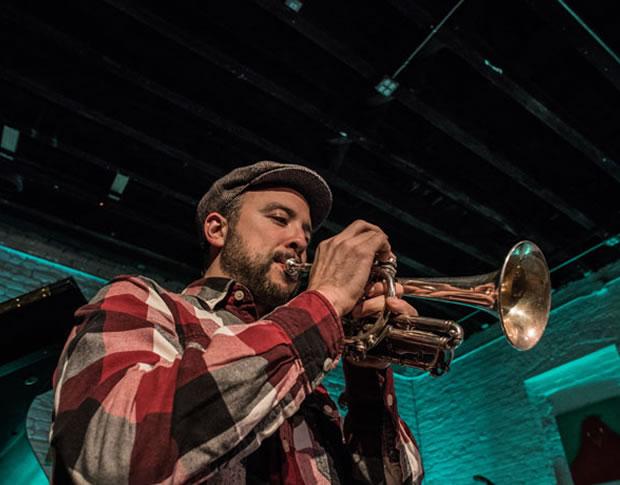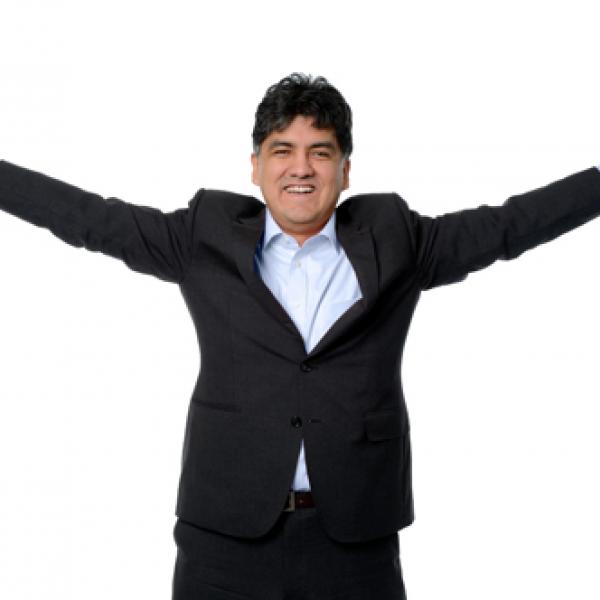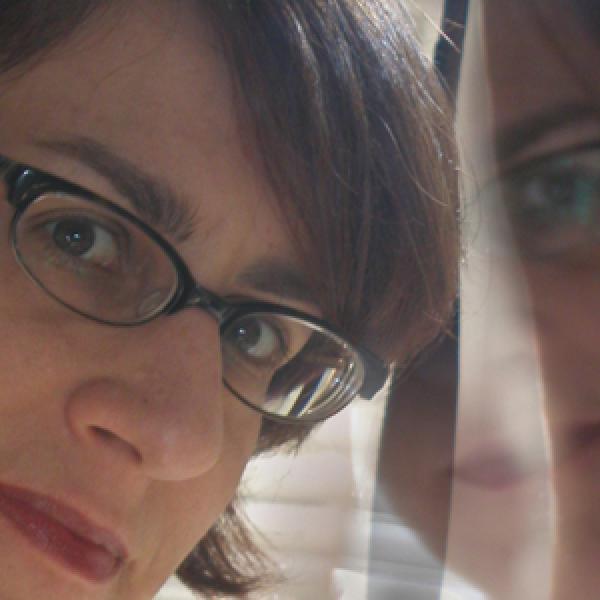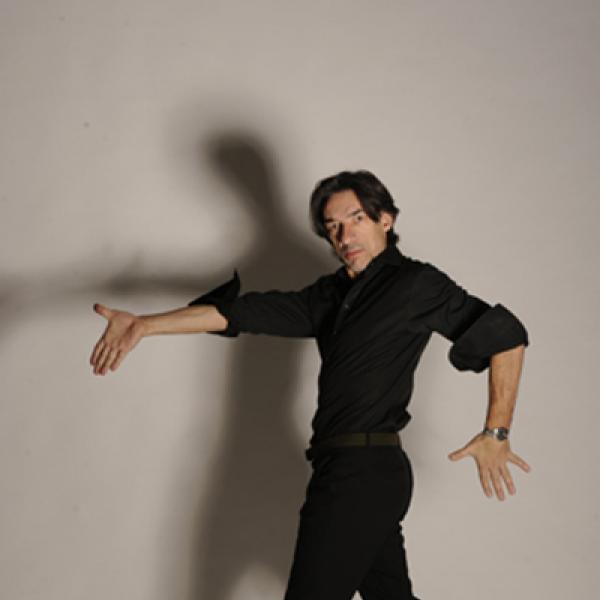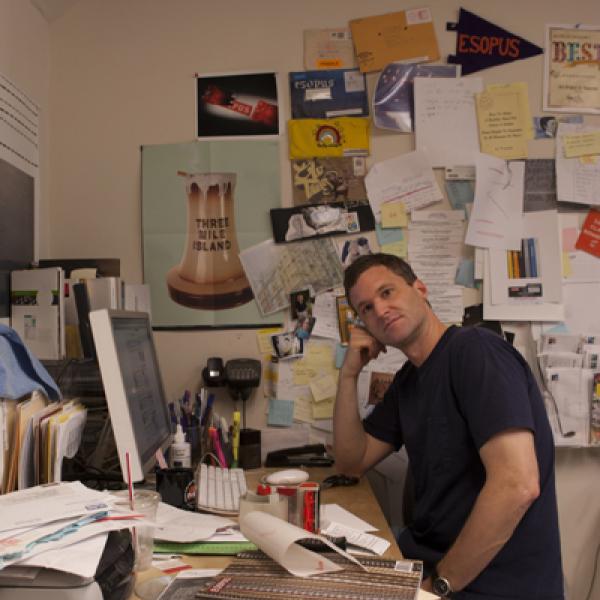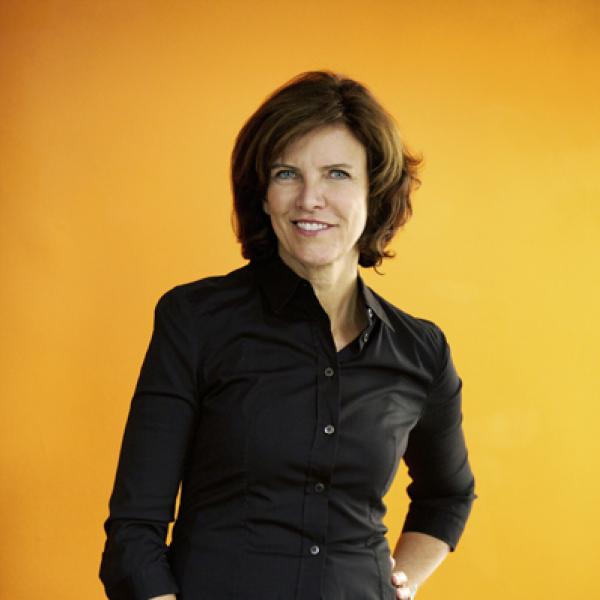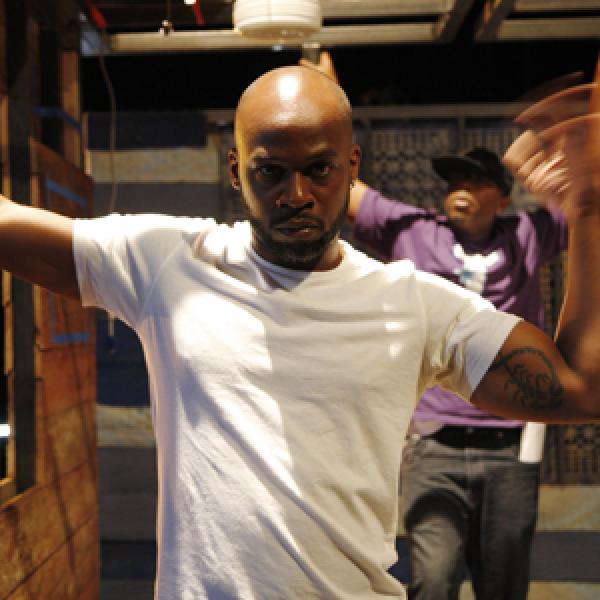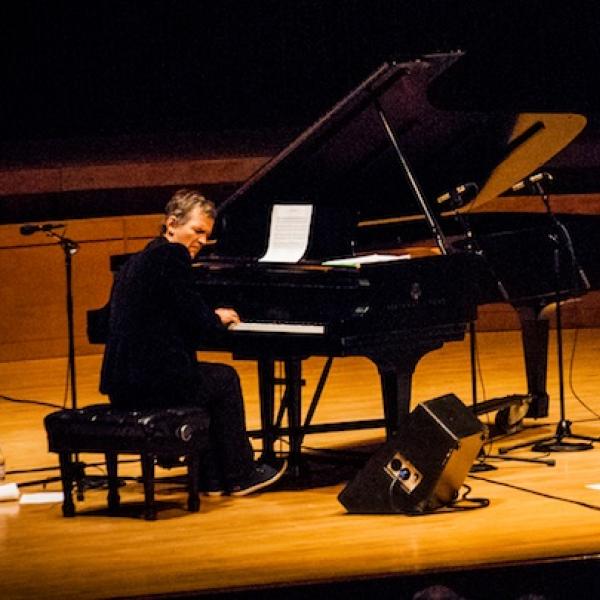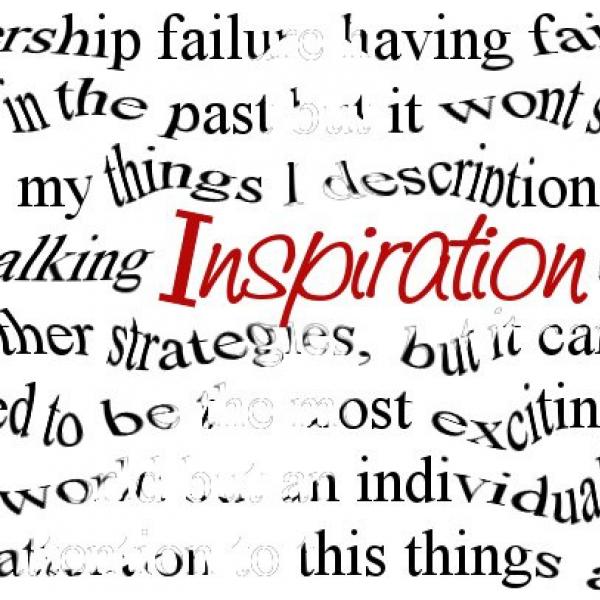NEA Arts Interview—Taylor Ho Bynum, transcript
(Music up: Positive Catastrophe, Dibrujo, Dibrujo, Dibrujo, "Garrison Ascending" )
Taylor Ho Bynum: My name is Taylor Ho Bynum. I'm a composer and cornet player and band leader, and runabout and organizer in various things.
(Music up: Positive Catastrophe, Dibrujo, Dibrujo, Dibrujo, "Garrison Ascending" )
The notion of inspiration is interesting, because I think there's moments where there's direct inspiration—I'll hear a piece of music and it just makes me want to make music; it makes me excited to be a musician. I want to run out and compose something to capture a similar kind of spirit that I hear from that. There's also the idea of sort of intellectual inspiration, studying how my heroes organized their music. Often the process ends up being much more directly inspirational to me than the product. As much as I love the product of all of the musicians I most love—be it Charles Ives or Duke Ellington or Anthony Braxton—as much as I love the product, I don't want to sound like them. So studying their process, what it was, how they created the music, what the structural elements that gave them their own voices—how can I use those as a means to discover my own. And then there's the idea of inspiration from things outside of music. I'm a huge fan of literature. My sister's actually a very accomplished novelist, and I've always been an obsessive fiction reader. And so how the ideas of narrative constructs can be informed in music—how do things translate between disciplines. My wife is a dancer and choreographer, so how does the idea of kinesthetic movement relate to concepts of musical movement. And then there's the idea of just inspiration from day-to-day life, from taking a walk outside, from taking a bike ride, from experiencing nature, from seeing a view from the top of a hill, to being frustrated about a political situation or a social justice situation, or things that working through day-to-day emotions and having the chance to translate those into the ephemeral space of a musical concept.
(Music Up: Navigation, "Possibility Abstract XII")
Anthony Braxton's been more than just a musical inspiration. I mean, he's been a personal mentor and teacher, a hero, and a dear friend. And I feel incredibly blessed to be able to have had that diversity of relationships with him, and with his work. I've had the chance to be a performer of it, a producer of it, a conductor of it, and being able to study it from many different aspects. What I find inspiring about Anthony is beyond his creative genius, it's a creative structure that does exactly what I was saying earlier, the idea that it simultaneously celebrates the individual and the collective. And it asks—it's really a celebration of humanity. It's really a celebration—his work is really—as complex and theoretical as it can get—at its heart, it's always about celebrating the potential of human creativity and what that can mean for an individual, for a community, for a planet. So working with him has given me—it gives me the challenge—I never could sound like Braxton even if I tried. I've always been a terrible mimic. But being in that kind of creative context as a collaborator and as a sideman and as a participant makes you sort of become addicted to it. <chuckles> And so it gives me the challenge to make my own work, to have my own work give me the same kind of reward and the same kind of engagement. And it's a constantly stressful challenge. Here's a man who's already a legend who's 30 years older than me, and every time I step on the bandstand with him he kicks my butt. <chuckles> You know? He sets the bar so high. And not just on a technical or musical level, but on a conceptual level. He's always coming up with new ideas. He's not willing to coast, rest on his laurels. He's always pushing himself forward. And that's such a powerful, profound inspiration for someone of my generation, to have my elders be so continually forward-thinking. As someone of the younger generation, we have no excuse but to try to be as creativity ambitious, as risk-taking, as conceptually—to give ourselves the same kind of conceptual challenge that he gives me as a collaborator.
(Music Up: Navigation, "Possibility Abstract XII")
I think what attracted me to jazz was the individuality of each of the players—the fact that it wasn't just about playing the music as it was given to you, but the fact that each individual in the ensemble had the opportunity to make a unique and personal and creative contribution to the overall form. I think I was—I've always been a bit of a busybody, or a—<chuckles>—or a loudmouth, or—I was always the kid raising my hand too much and challenging the teacher, or getting into trouble. And it provided a creative template where that was the expectation, where one was expected to bring one's own ideas, and bring a creative consciousness to the creation of the work. And it was interesting; it's almost—I remember when I was around, again, that age—14, 15 years old—where I was going from being a big baseball fan to being a big jazz fan. <chuckles> And having these funny moments, half asleep, falling asleep, where I'd get the two confused, and I'd imagine Dizzy Gillespie batting cleanup or something. But the way that you could have these individual heroes, and they each had a different position and a different role, the same way you do in baseball, and the idea that the whole band works together with—both in a defined role, but always sort of reimagining what the definition of that role is and coming together to create something new and create something unique and create something special, that could only be made by those individuals—the idea that you switch out the bass player and the whole thing becomes different. You switch out one member of the ensemble—I was fascinated by how different Miles Davis's quintet with John Coltrane and Miles Davis's quintet with Wayne Shorter was. The idea that each individual had the chance to do something—it was a music that celebrated the individualism—each individual—while simultaneously celebrating the ensemble and celebrating the collective. I think from a very early age, whether on a subconscious or conscious level, that's something that was incredibly exciting to me.
(Music up: Positive Catastrophe, Dibrujo, Dibrujo, Dibrujo, "Wolves and Buzzards" )
I think the fluidity of roles or definitions in jazz and creative music is, again, one of its real gifts and inspirations. I love the fact that the identity of being a performer and a composer and an improviser and a band leader all become very blended, and decisions you make as a band leader are actually compositional decisions, because if you're writing for improvisers, who you choose to be your collaborators deeply shapes your composition. The fact that I can lead a band and have everyone in my band also be bandleaders and composers on their own means I know I can trust them to make conscious decisions for the ensemble. I can give that much more responsibility and agency to the musicians I'm working with. And in turn be rewarded, when I'm working with those people as a sideman, I know that they can offer that trust to me, and that I can bring a different level of creative choice to a moment than if I was purely a technical or purely there to fulfill a defined role. And I actually think that's one of the things that's both the creative gift and the marketing dilemma—<chuckles>—of this music, is that it so resists definition. It resists definition—we live in an age where we're asked to make everything fully understandable in 140 characters or less. And what I love is 140 thousand characters couldn't sum up what this music is, and how it changes, and how it's constantly redefined. Which might, again—<chuckles>—might serve to marginalize us in the capitalist marketplace, but gives it a tremendous place of inspiration because it's never fixed. It's never about one thing; it's always about a universal. At its best.
(Music Up: Navigation, "Possibility Abstract X")
My newest recording is a four-album set called Navigation. And I decided to actually—the new piece that I wrote, that's called "Navigation," is essentially a modular composition, where one piece is based on—has six different movements, but those movements have no predetermined arrangement or order or orchestration. It's up to the musicians to interpret those materials in the moment, and actually up to the musicians in the ensemble to make the choices of what music to play next. I realized, being a composer who works with both precomposed materials and improvised materials—as much freedom as I always gave my musicians in my work, it almost always followed a fixed roadmap. It'd have Section A, and then someone could improvise and take it wherever they wanted, but eventually we'd end up at Section B. I wanted to give my ensemble members the freedom that if they—if we started at Section A and we're improvising and in a moment, and it really seemed more appropriate to go to Section Z instead of Section B, I wanted to give them the agency to bring the whole ensemble to Section Z. And that way we still are using composed materials but we can actually improvise with how we implement those composed materials as opposed to having a strict juxtaposition of what is improvised and what is composed. I've always been really interested in trying to blur the line of how those two practices interact, and really—because ultimately composition and improvisation I feel are just two sides of the same coin. They're both ways of navigating form, of navigating sound. So I built this composition in that way.
(Music Up: Navigation, "Possibility Abstract XII")
Of course when you build a composition that way, the idea of recording one version of it and having this one fixed version being the, quote-unquote, definitive idea of what that composition is was sort of anathema to the basic ideas behind the piece itself. So in recording it, I decided it would make more sense to record multiple versions and release multiple versions, to present the idea that a recording does not create one fixed, definitive document, but just really represents one possibility. So the idea with the record release is we recorded four different versions of the piece, two of them live and two of them in studio; two of them with my regular sextet and two of them with one additional musicians. The two studio versions made it a 7-tette; and released them all—<chuckles>—and released the two live versions on LP and the two studio versions on CD, and if you buy either—any version of the set, you get a digital download card for all four sets. So I really wanted to play with the idea that even if we record something, it doesn't become a fixed document, that I wanted the listener to try to come—to each time they listen to this piece listen to it fresh, listen to a new version of it, listen to how it manifests differently. Every time you bring a group of creative musicians to one body of material it will come out differently every time, especially when I'm really blessed to have just truly extraordinary and brilliant and trusted collaborators. So every time I give them this body of material, they come up with something completely unique and something very special. So the idea of putting out this four-album set, while it seems like an act of terrible arrogance and hubris—<chuckles>—it's really the only way I felt I could properly represent what we're trying to do as an ensemble with this particular body of music.
(Music Up: Navigation, "Possibility Abstract XII")
I think the question of inspiration and audiences is a very interesting one, because—and it actually relates to what I was saying before about even the idea of releasing recorded music and the sort of core—what's the word? I'm forgetting the word for things that don't quite fit together—the core oxymoron of recording improvised music—really what I do is for an—even though I do things that are challenging and experimental, really it is for an audience. I'm not doing this as a wholly solipsistic pursuit. Where it's at its most inspiring is when simultaneously the musicians and the audience discover something new and get somewhere together that neither could have gotten to individually. I think the measure of both inspiration and support that a performer gets from a supportive audience is hard to overstate. There's really that magical place, for me, in making music where it's not about even the concept of me as an individual performer and the audience sitting there in their chairs as individuals, but the sense that we're all part of some undefined, shared moment, where it's not about us as individuals anymore; it's about the magical space we've created together. And I think in looking for that space—as it doesn't happen every night; it doesn't happen every performance; it doesn't happen every year—but the moments that that happens are why I make music, and why I listen to music, and why I go to music as a listener, for that chance to be transported and reminded that we can be part of something larger.
(Music Up: Navigation, "Possibility Abstract X")
Music Credits:
"Garrison Ascending" and "Wolves and Buzzards" from the CD Dibrujo, Dibrujo, Dibrujo, composed by Taylor Ho Bynum and performed by Positive Catastrophe. Published by Thobulous Music, BMI. Used courtesy of Taylor ho Bynum and Cuneiform Records
Navigation, composed by Taylor Ho Bynum, performed by Taylor Ho Bynum Sextet and 7-tette. Published by Thobulous Music, BMI. Used courtesy of Firehouse 12 Records.
